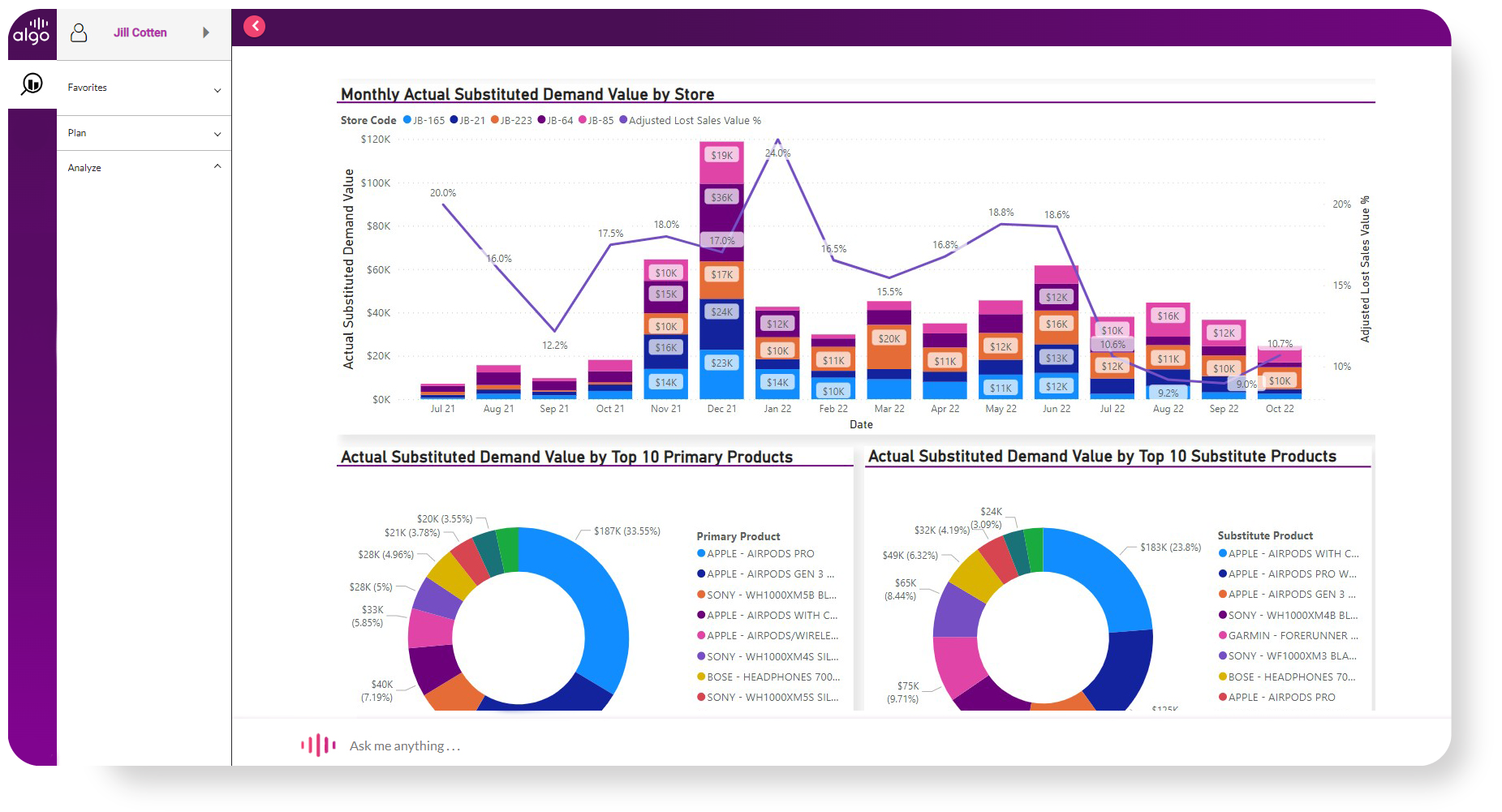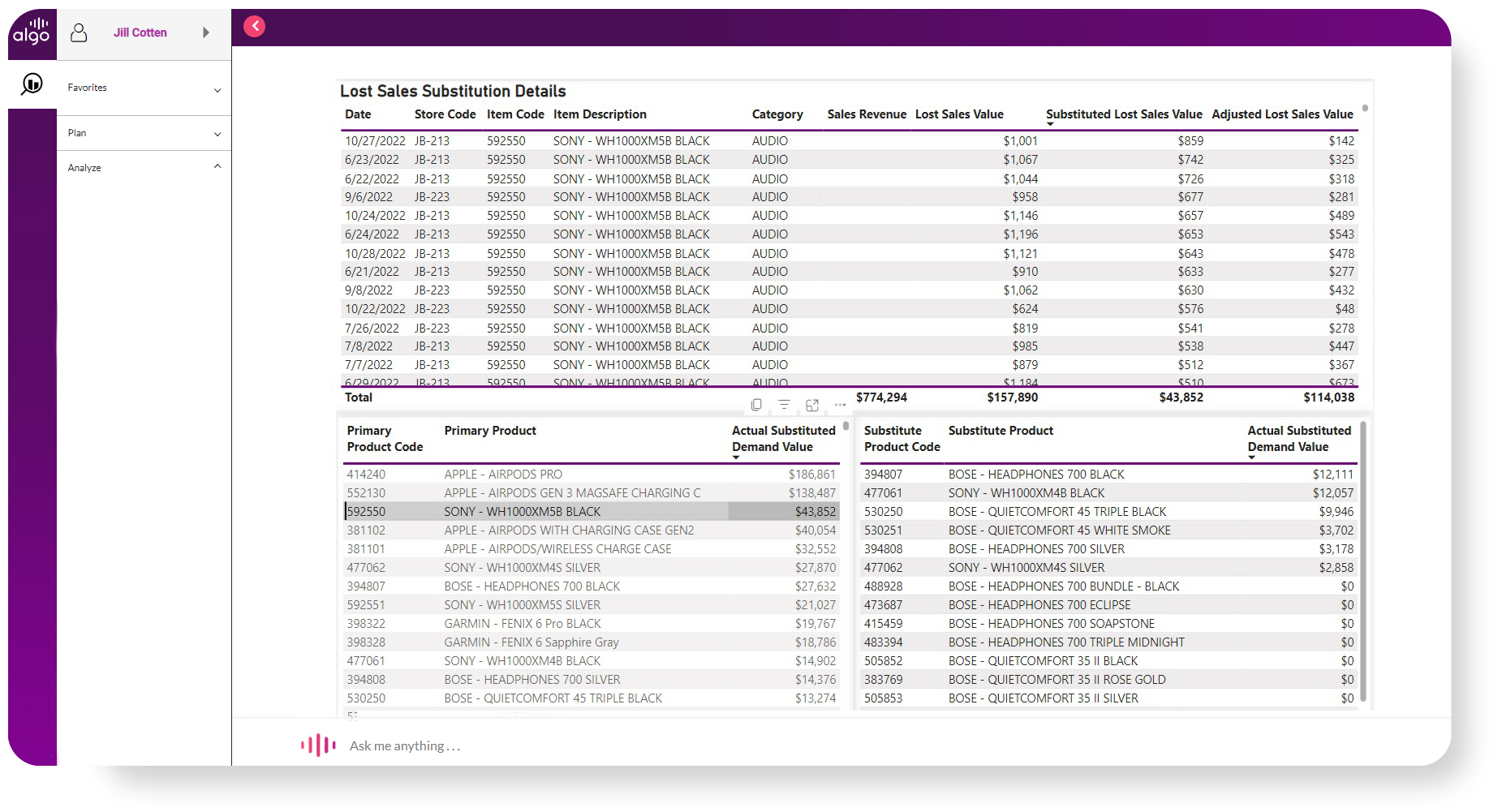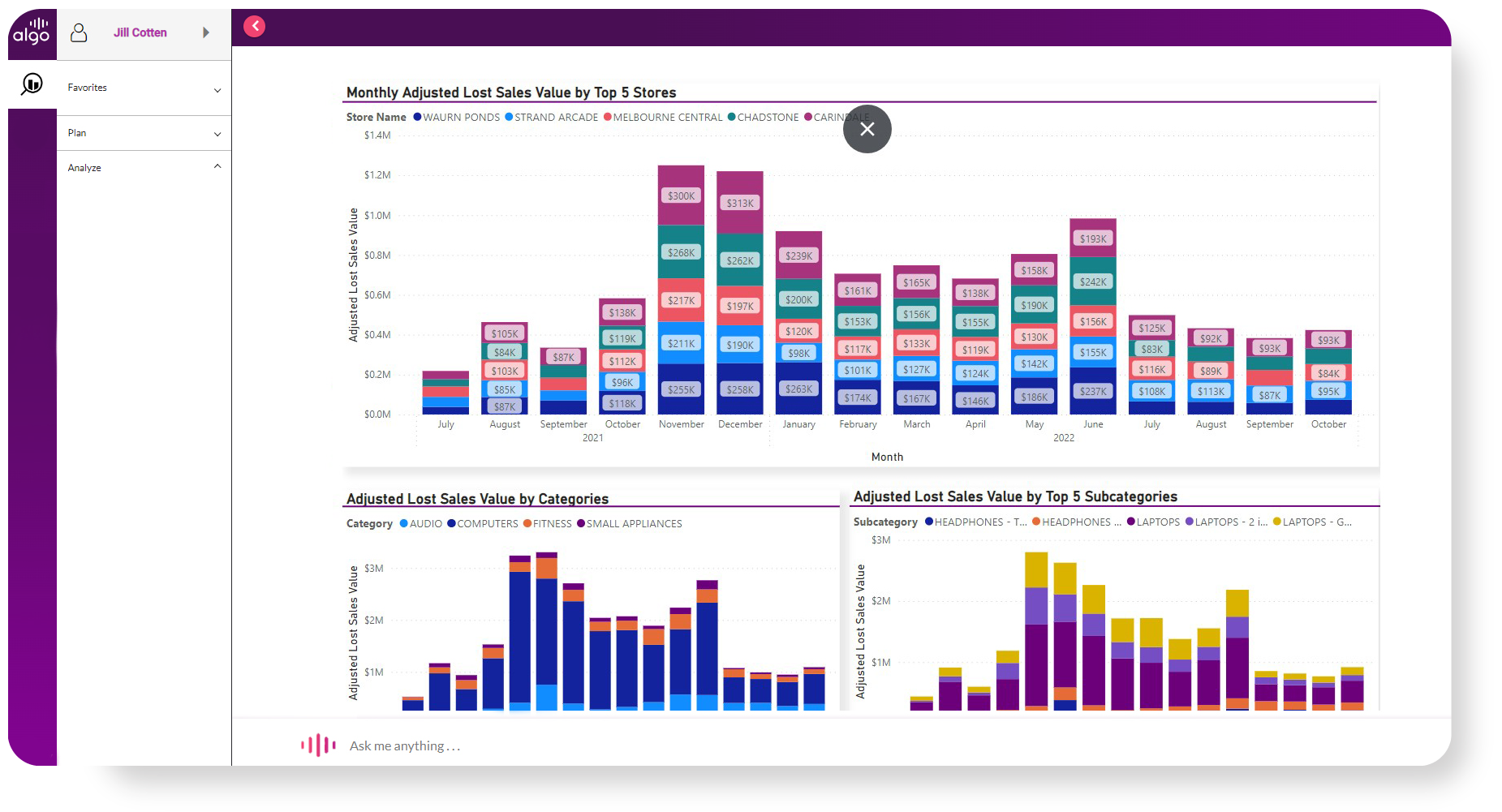Key Features
Forecasting
Anomaly Detection
Demand Substitution
Why Choose Algo’s Lost Sales Optimizer?
Understand your lost sales, optimize your inventory levels, and seize every sales opportunity. Choose Algo Lost Sales Optimizer and drive better business outcomes.





